Quail droppings how to use. Liquid plant food. How to breed quail droppings for feeding
It can be assumed that since ancient times, when a person just started farming, one of the first fertilizers was, of course, bird droppings. Sowing different plants, the first farmers noticed that in places where litter was accidentally scattered, the plants grow much better. And gradually, in order to increase the amount of food from their garden, people began to bring in bird waste.
Until now, on some islands of the Caribbean Sea, guano is mined in large quantities - the droppings of sea birds decomposed in a dry climate. This fertilizer is even exported. In the mid-60s-70s of the 20th century, due to the production of a large amount of mineral fertilizers, bird droppings somehow faded into the background. But today, undeservedly forgotten fertilizer is becoming popular, especially in household plots. With a long-term content of quails, a large amount of quail manure accumulates, since the yield of manure in relation to the feed is approximately 1:1 by volume, i.e. a bucket of feed - a bucket of litter. Of all types of organic fertilizers, bird droppings are considered the most valuable. By chemical composition it is 3-4 times richer than large manure cattle. Nutrients in it are in a combination favorable for plants and soil microflora, quickly dissolve in water and are easily absorbed.
According to the effect on the crop in the first year of application, bird droppings are close to mineral complex fertilizers. But due to the high concentration of organic components and their gradual release, bird droppings affect the crop in the next 2-3 years, that is, it has an aftereffect. And this must be taken into account when introducing litter, as well as the fact that the amount of nutrients in the litter varies depending on the type of bird, its age and feed composition. However, bird droppings should not be considered a panacea. The ratio of nutrients is not suitable for all garden crops, in particular potatoes, some root crops and other potassium-loving vegetables. Potassium deficiency can be compensated by adding fertilizers, such as potassium chloride (100 g per 1 kg of manure), or by adding ash. There is another disadvantage of this fertilizer: the main part of the nitrogen in the litter is in the form of uric acid, which, when high doses of litter are applied, inhibits the growth of seedlings and young plants. Gradually, it turns into urea, and then into ammonium carbonate, which is easily nitrified in the soil. Therefore, the result of an overdose is the accumulation of nitrates in vegetables. In addition, fresh bird droppings are toxic to plants due to water-soluble metabolites (poultry waste products), and direct contact with the plant can lead to burns, disease, and even death. How to eliminate the negative effect of fresh litter? It must be applied together with straw, peat or sawdust in a ratio of 3:1. Litter is usually used in the first half of the growing season of vegetable crops.
Store in pure form litter is undesirable, since a significant proportion of nutrients, in particular nitrogen, is lost. Losses are especially high (up to 40%) during freezing in winter and subsequent thawing in spring. Try adding fresh sawdust, husks (husks of sunflower seeds) or fine (from a combine with a chopper) straw to this area. These materials will loosen the soil (physical impact) and will also help to decompose and recycle excess nitrogen compounds contained in the dung (biological impact with nitrogen conservation). The fact is that microorganisms found in the soil and in the same litter, decomposing the fiber of sawdust and other materials, spend nitrogen on this. This will have a double benefit - the soil will become loose, and sawdust, husks and straw will turn into humus, from which plants will consume nutrients for several years. The simplest, most affordable and cheapest way to process manure, in which nitrogen losses are negligible, is composting. For this, moisture-absorbing peat, straw, sawdust, and leaves are laid out on an elevated flat area with a layer of 30 cm. Bird droppings are poured on top with a layer of 20 cm, and then again peat or sawdust and again droppings. And so they form a collar up to a meter high. If the components are dry, then moisten them when laying. And the unpleasant smell can be eliminated by covering the pile with straw and a layer of earth 20 cm thick. After a month and a half, the compost is ready. At the same time, pathogenic microorganisms, helminth eggs and weed seeds die in it. It is better to close up peat manure compost in the fall. It must be scattered and immediately embedded in the soil by digging the garden. If you add compost in the spring, the ripening of the crop will slow down. And only on sandy soils this can be done in the spring - two weeks before sowing or planting seedlings.
Litter compost can be applied randomly, or better - in furrows or holes. But not all gardeners keep the bird. Where can you buy this valuable fertilizer? Litter is available at large poultry farms. Here it is disposed of at a high (700 °C) temperature, bacterial fermentation is used at 250-300 °C or composted. Thermally dried manure and manure-based peat fertilizers (Piksa, Roossis and others) are superior to mineral fertilizers and manure in their effect on the crop. They retain almost all the properties of fresh bird droppings, do not contain pathogenic microorganisms and weeds, and, unlike it, have a constant composition. These modern fertilizers are used in pre-sowing treatment of seeds, growing seedlings, spring dressing the soil for garden crops and for feeding them. These fertilizers restore soil fertility, increase yields, accelerate the formation and ripening of fruits and extend their shelf life. Of all the existing types of organic fertilizers, bird droppings are in the first place. It contains a lot of different nutrients, and plants absorb them quite easily.
The drier the litter, the greater the concentration of nutrients. If in the wet state it contains up to 2 percent nitrogen, 1.5 percent phosphorus and up to 1 percent potassium, then in the dry state it contains two to three times more: 5-6 percent nitrogen, 3-5 percent phosphorus and 2-2, 5-potassium. Dried manure is 80 percent organic matter. Many people think that the best litter is chicken. However, both duck, and goose, and turkey are quite close in their properties to it, only chicken gives less litter. It is good to use bird droppings as the main fertilizer. It is necessary to apply it under potatoes and vegetables before sowing for digging in such an amount: in dry form -100-300 g per 1 sq. m, raw -300-900 g. The best result happens when litter is used as top dressing. To add raw manure to the holes or furrows, you will need 40-100 g, dry -20-50 g per 1 sq.m. Liquid top dressing is even more effective: dilute 1 kg of raw manure or 0.5 kg of dry manure in 10 liters of water and apply 1 liter to the soil every 7-10 days until vegetable crops ripen. Bird droppings are indispensable in the preparation of composts, both ordinary, household and peat droppings, sawdust droppings, cow droppings. Application rates - up to 1.5-2 kg for digging.
With a large number of birds, the further use of litter can become a source of additional income and increase the profitability of the entire household plot as a whole. It is possible, for example, to build a greenhouse and a biogas plant that uses animal waste - manure and droppings. The resulting gas can be used to heat the quail farm itself and the greenhouse. You can put quail manure in compost heaps and after some time, having packaged it in appropriate packaging, sell it as fertilizer.
L. A. Zadorozhnaya "Quail"
Kira Stoletova
All dacha owners and country houses know that in order to get a good harvest from the garden, it is necessary to carry out regular fertilizing of plants with fertilizers. Gardeners find minerals of organic origin useful for growth and productivity in pigeon or quail droppings. In addition, such a fertilizer from fresh quail manure can be given to a person for free if he keeps such birds at home. It remains only to find out how much quail manure is used as fertilizer and how to use it rationally.

The value of organic fertilizer
Quail manure is highly valued by gardeners because of its saturation with minerals that are especially useful for plants. Cow dung or any other bird droppings have a more modest composition. So, even nitrogen and phosphorus in them are several times less compared to quail droppings. Many gardeners also note that the use of quail fertilizer is perceived by the root system of fruit plants better than with other organics. And its beneficial effect has a positive effect for 36 months. No organic fertilizer in the world has such characteristics.
Quail litter, in addition to its positive aspects, also has disadvantages. One of them is the content of uric acid in the composition of the fertilizer. In a certain concentration, such a substance adversely affects the root system of plants. In addition, improper use of quail manure can destroy the plant. In some cases, it leaves burns, but most often leads to its poisoning, so many gardeners, before using quail droppings, process it, defend it and dilute it with other substances useful for vegetation.
Features of litter processing
Plant nutrition plays important role in getting a good harvest. But in order for the litter from domestic quails not to destroy the plants due to the uric acid content, it is necessary to process it. Processing of quail manure is its overexposure. This procedure has its own characteristics that everyone who decides to do this should know.
Most effective method overexposure - composting. Quail manure containing urea must be settled for several months so that its level drops to a safe level. Using a fresh product will not bring the desired effect, but will only damage the plants. At home, the processing of quail manure occurs as follows:
- Prepare a large volume container (barrel, metal tank, etc.).
- Pour liquid quail manure.
- Cover with a layer of sawdust or straw.
Each gardener uses quail droppings as a high-quality feed for fruit plants in order to get a good harvest in the summer season. The soil receives the minerals it needs, which leads to increased growth of seedlings. We must not forget that the feeding itself also requires certain knowledge in this area. Compost should be used for its intended purpose only in the fall, so that the quail droppings are well absorbed into the soil before the cold weather. It is forbidden to make compost in the spring: such actions can lead to disruption of the vegetation and ripening of the fruits themselves.
Feed preparation
Placed quail manure in compost barrels is used only as fresh fertilizer. But, if there is no time to wait, manure should be diluted with water and let it brew for several days. The resulting substance is called top dressing. The use of such a tool allows you to enrich the soil and the plants themselves with useful substances in the summer. You should know how to feed and what proportions of water and quail droppings will be safe for vegetation.
Experienced gardeners recommend preparing top dressing from quail droppings a week before using it. To do this, you must use an ordinary bucket with a lid, in which quail manure (0.5 l) is placed and water (10 l) is poured. The resulting substance should be thoroughly mixed and covered with a lid. In a week, quail manure fertilizer will be ready. It should be used instead of watering.
Fresh or dry?
Before you fertilize fruit plants with quail manure, you need to know that this product can also be used dry. Fresh litter contains:
- 1.5-2% nitrogen;
- 1.5% phosphorus;
- 0.7-1% potassium.
After heat treatment, the product becomes even more saturated with useful substances:
- 5% nitrogen;
- 3-4% phosphorus;
- up to 2.5% potassium.
It is very difficult to produce such an increase in the indicators of nutrients for plants on their own. This is due to the processing of the product at high temperatures. On an industrial scale, drying takes place in specialized cabinets at a temperature of 700-800°C. In the household, such equipment is not used. It is more expedient to buy a ready-made product in a specialized store in the form of a powder.
The dry product has a composition richer in useful elements. Even after heat treatment, the manure does not lose its properties and becomes even more effective. This difference in performance determines the higher demand for industrial products. In addition, fresh litter has to be used after long-term processing, and dry litter has a smaller list of requirements.
What are gardeners talking about?
Quail manure and a large variety of organic fertilizers have become less popular in recent decades than they used to be.
This is due not to the poor qualities of the product itself, but to the fact that specialized top dressings have appeared on the market that do not require long-term processing. But why buy something new if a quail population is grown on a personal plot? In addition, for garden purposes, manure is no worse than specialized tools.
There are also certain rules governing the proper use of quail manure in order to obtain the highest possible yield from vegetable crops. The owner of the garden should:
- Apply quail droppings for white cabbage at the rate of 2 kg/sq. m.
- Use manure for pumpkin and tomatoes at 3-4 kg / sq. m.
- Fertilize root crops at 2-2.5 kg / sq. m.
- Apply 2-2.5 kg/sq. m. substances for onions, garlic and herbs.
Experienced gardeners have noticed that quail manure as a fertilizer has some features that manifest themselves in different ways in the frequency of its use. So, in 1 year, manure is similar to other fertilizers, but in the next 2-3 years you can notice a significant increase in the amount of the crop. We must not forget that quail droppings can be different. It depends on the quality of the birds' food, their health, age and even breed.
Every farmer knows that quail manure as a fertilizer has good indicators of the benefits spent on it.
That is, how many kilograms of grain or other food a person spends on feeding quails, he will receive the same amount of the desired product. The ratio of 1 to 1 allows you to use manure for your own purposes free of charge, since this product is no longer suitable for any purpose.
The use of such fertilizers can also cause some difficulties in terms of quality and quantity of the crop. To understand the essence of the problem itself, it is necessary to know the composition of the fresh product, as well as information about what reactions occur with it during composting. According to experts, a large concentration of nitrogen useful for plants is contained in urea, which is harmful to them. The use of composts and their infusion leads to a partial loss of nutrients. In addition, insufficient manure treatment harms the plant, kills it and poisons the fruits, saturating them with nitrates.
Fertilizer for indoor plants
Some apartment growers are often interested in the question of how to fertilize indoor vegetation with quail droppings. Growing fruit plants in houses and apartments is a rarity. Most often, the main activity stops at keeping flowers in pots. It is impractical to introduce litter into the soil, mixing it with a small amount of earth. Most often, fertilizer in small doses is placed on top of the soil, and nutrients get to the roots of flowers with each watering.
We must not forget that a large dose of fertilizers applied can adversely affect the condition of plants. Experts advise pouring no more than half of 1 tsp. into one container. Equally important is the location of the compost. It should be placed at a safe distance from the stem so that the product does not burn it.
The production of mineral fertilizers actively developed in the early seventies. T when gardeners began to replace organics with “chemistry”. Quail manure has always been in demand, but with the development of the production of mineral fertilizers, it faded into the background. Later, gardeners realized the importance of organics, they came to the conclusion that litter is necessary for the full growth of plant crops.
Benefits of an organic remedy
Today, quail manure is considered one of the highest quality fertilizers. . Dry matter is used to enrich the composition of the soil, as well as to feed vegetable crops. It is also popular because it is not so expensive. The properties of quail manure can be compared with the mineral composition. It mainly contains minerals necessary for the plant.
Quail manure is a popular universal fertilizer. When using it, you need to follow the dosage. The advantage of the tool also lies in its cost-effectiveness. If you are not buying a ready-made organic product, it will be useful to know that 1 kg of litter can be obtained from 1 kg of feed.
When keeping bird droppings for more than a year, you can achieve the same effect as with the use of mineral compounds.
Quail, as well as chicken manure, is often used in gardening. If we compare funds with manure, it is worth noting that the latter has a less saturated composition. Organics contribute to the active growth of vegetables. If it is used to enrich the soil, the impact will last up to 2 years.
The chemical composition of the fertilizer directly depends on the breed of poultry and the saturation of the diet.
Disadvantages of quail litter:
- elevated uric acid;
- decay of useful substances during improper storage;
- Strong smell.
Application features
Despite all the advantages, you need to be careful with organics. Litter is not suitable for potatoes. When applying fertilizer, it is necessary to strictly observe the dosages and remember that the uric acid contained in this product inhibits the development of seedlings and adult plants.
Failure to comply with the dosage leads to the fact that the crop begins to accumulate nitrates, and they are harmful to health.
Fresh manure is not used as fertilizer. It is toxic, and if introduced into the soil, the plant will be exposed to diseases that will be difficult to cope with. The introduction of the “correct” litter should be combined with the mineralization of the soil. For these purposes, peat, straw, sawdust are used. It is important to say that the litter enriches the soil well during the growing season of vegetables. Litter application rates: a dry agent is applied in an amount of 250 g per 1 sq. m, liquid - from 300 to 800 g per 1 sq. m. The frequency of applying liquid top dressing is 1 time in 10 days for a month.

The tool must be properly stored. If you leave it in the open air, the nutrients will evaporate. Storage rules must be observed in winter: do not allow the product to freeze.
Litter contains a large number of microorganisms. They, together with mineral components, quickly turn into humus and become suitable for use as fertilizers.
Composting and mineralization of soil
Composting involves the processing of quail manure. Some nitrogen is lost in the process. You will need: water-absorbing layer, sawdust, peat, leaves, straw, droppings. The layer of litter is 20 cm. Water absorbent - should reach 30 cm. When laying the components, you need to moisten them. In a month, you will have a ready-made organic remedy. During this time, pathogenic microbes will die.

To muffle the unpleasant odor, you can cover the compost with straw.
Soil mineralization is carried out in September, as the harvest will be harvested in autumn. It is not advisable to store compost for several days, it is better to use it immediately after preparation. The product is scattered on the ground in need of recharge. If the soil in a particular area is sandy, compost should be applied in the spring 3 weeks before the seedlings are planted. Form small holes and place mineral fertilizers in them.
Quail droppings are sold at poultry farms. It is dried using bacterial fermentation technology. The processed product has a more saturated composition. In terms of its effect, it can be compared with mineral supplements.
Thermally treated manure does not contain weeds that are harmful to the full development of the plant. The purchased product can be used for pre-sowing seed treatment and spring soil dressing. It contributes to the early ripening of fruits, thus increasing productivity. Quail manure contains substances that are easily absorbed by the plant. It is recognized as one of the best fertilizers. Dry litter is much safer than fresh litter.
Quail droppings are often compared to chicken droppings. The latter is slightly cheaper. Bird droppings can be used as basic fertilizer or top dressing. If it is necessary to carry out top dressing, calculate the proportions of 50 g of funds per 1 sq. m. For better absorption, the fertilizer is diluted in water. It is advisable to combine bird droppings with sawdust and peat. The recommended application dose is 2.5 kg of dry manure into compost for digging. If you keep a lot of birds, you can make a business selling organics.
Quail droppings are used to feed various plants. To increase the yield of cucumbers, tomatoes, cherries and apples, you can mix it with water and other organic fertilizers. Quail manure is mixed with humus taken from the compost pit. Plants literally come to life from such dressings.
When preparing the product, you need to remember the dosages and rules of agricultural technology.
Types of composting
They are excellent in effect and duration. The purpose of composting is to obtain high-quality organic fertilizer.
- Passive composting is a simple but lengthy process. It is necessary to take the right amount of litter, place it on a flat wooden surface. Future organic fertilizer is sheltered from precipitation. To get compost, you have to wait 6 - 8 months. The quality of the final product will be lower than that obtained by active, biological or chemical composting. Organic matter during passive composting will decompose into molecules. A significant number of useful components will be lost.
- Active composting has a similar technique, but here human intervention is carried out. During the entire period, chemistry, special microorganisms are added to the mass. If necessary, the litter is heated. Thanks to such processes, composting is accelerated, the loss of substances useful for organic matter is replenished. The quality of the final product becomes higher.
- Chemical composting involves the enrichment of manure with special substances. These substances help to neutralize toxic components. Mineral chemicals are added to the mass to improve the properties of the final product. Warming up allows you to destroy harmful components and activate beneficial microflora. Certain chemicals promote the reproduction of microorganisms. Compared to the above methods, chemical composting is more expensive.
- Biological composting (fermentation) is the introduction of biologically active microorganisms into the mass, which improves the quality of the litter.
Effective liquid top dressing
Fertilizer is prepared by fermentation: for this, compounds are used to help speed up the process. 500-900 g of small sawdust is poured into a cage with a bird. These sawdust are processed by a specialized compound. When you clean the pallet, you will see litter with sawdust. It is necessary to mix the mass and form a separate pile: from above it is poured with an accelerator composition. You should get a blank for fertilizer.
If you cook in the cool season, place the product in the garden, you need to withstand a month. This fertilizer will not emit a strong odor. The advantage of using such a tool is the absence of weeds. In a month you will be able to use it.

Infusion of quail manure is a fairly common method.
A ready-made organic product is sold in a store: it is only diluted with water. To prepare an environmentally friendly organic fertilizer, you need to take 1 g of litter per 100 ml of water. Means insist 3 days. As we have already said, droppings contain uric acid, which is harmful to plants. To neutralize it, you need to fill in the litter in the same amount: 1 part per 100 parts of water. Then the water is drained, the procedure is done 3 times.
Fertilizer can be prepared from a granular composition. Be sure to follow the instructions that come with the composition. It will take 10 liters of water per 50 g of the product. Insist for a day. An alternative option is to bury the dry mix directly into the ground. The granules will gradually dissolve and the root system will be fed with useful components.
Video
More useful information on the use of quail manure as a fertilizer, see the video
Conclusion
Quail droppings are a valuable fertilizer. Unlike mineral, it is environmentally friendly. Precautions must be observed when using this product. Chicken manure has worms. When in contact with it, wear specialized clothing and gloves. Organics are stored in a wooden tightly closed container.
Quail droppings as a fertilizer, how to use this tool, we will consider in this material. Currently, this fertilizer is used quite rarely, although it used to be quite common. However, if a person or his acquaintances keeps quails, then the droppings can be perfectly used as an effective fertilizer for plants and crops. Also, as a fertilizer, you can.
On the advantages and disadvantages
This fertilizer, of course, has its own significant advantages. For example, here we can note the content of a large number of substances so important for the growth and development of plants as nitrogen and phosphorus. Plants thanks to these components will quickly grow.
Interesting! In many respects, quail manure as a fertilizer is much better than chicken manure. Plus, only fertilizer based on quail waste will give the soil special substances that stop the development of soil infections.
From one kilogram of quail feed, you can get one kilogram of good fertilizer. In agriculture, quail manure is actively used and plants absorb it much better than some artificial additives. Plus, quail droppings can be stored for three years and used during this period without losing all useful qualities. So, many gardeners and gardeners even buy already packaged quail droppings, so that they can then be used for their intended purpose.
In general, this fertilizer, in addition to being perfectly absorbed by plants and nourishing them, activating growth, also has a beneficial effect on the soil, increasing its fertility. Reviews on how to use quail droppings as a fertilizer say that this remedy is excellent. However, it also has its drawbacks, which we will discuss below.

About the processing of quail manure
Such a natural processing of litter for three months will ultimately result in an excellent fertilizer. It is best to carry out the manipulation in the fall, so that the fertilizer is ready by the spring. If composting seems like a long process, then you can prepare a quick top dressing based on quail manure.
To do this, you will need to fill half the container with litter, and then add the same amount of water. Mix everything and, covered with a lid, leave for several weeks. Then you can add it to the soil, diluting 500 grams of the mixture with ten liters of clean water beforehand. How to breed for fertilizer.

On the additional video that is present in this material, you can see in more detail how to use quail droppings as a fertilizer. Such top dressing will definitely be a full-fledged replacement for fertilizer, but it is important to use quail droppings correctly, after getting rid of toxic substances in its composition.
Quail droppings, as a fertilizer, are now being used less and less, because modern mineral fertilizers are much easier to prepare, and they cost much more. But those who keep quails should still try to use the waste products of these birds to create comfortable conditions for domestic (and not only) plants.
So, first we will talk about the advantages of fertilizer based on quail manure. First of all, it is worth noting its rich composition, which contains a large amount of minerals (nitrogen, phosphorus, etc.) necessary for the rapid growth of various plants. In many respects, quail manure is superior to chicken manure, because it contains special substances that prevent the development of soil infections.
Also, the disadvantages include insufficient saturation of the fertilizer with potassium, which is especially important for the growth of potatoes and some other root crops. Therefore, if the owner of the cottage uses quail droppings as the main fertilizer in a plot where a lot of potatoes grow, he should additionally add wood ash to the soil. Instead of ash, compost from the remains of plants, which is at the last stage of decomposition, is also suitable.
How to recycle quail droppings?
As mentioned earlier, there are toxic components in quail droppings that have a bad effect on plants. Fortunately, there is an easy way to get rid of these substances, ie. processing is necessary (you only need to “overexposure” the litter for some time). But you should not leave the substance for drying in the open, because then almost all the nitrogen and other useful substances will disappear. It is best to compost the manure according to all the rules and get high-quality fertilizer. It is not so difficult and even a novice gardener will cope with this work.
Cooking compost
We find a suitable container - an ordinary barrel is best. Now it is necessary to lay quail droppings and straw in layers in it. That is, at first about 20 cm of litter is placed, 30 cm of straw on top, then litter again, etc. Straw is needed to absorb liquid, but small sawdust is also suitable instead.
Such processing allows you to get a useful fertilizer that can be applied to the soil. It is best to perform such manipulations in the fall. When the fertilizer is ready, it must be evenly scattered throughout the area, and then immediately dig up the area. Experts do not advise using quail manure in the spring, as this will worsen the vegetation process of many plants.
Plant nutrition
If the composting method seems long to someone, then you should try preparing top dressing instead.
A suitable container is half filled with quail droppings, and water is poured into the remaining space. Everything is mixed with a wooden stick and covered with a lid. In this form, the litter lasts at least a week. Before adding to the soil, half a liter of the mixture is diluted with ten liters of water.
Heat treatment
Heat treatment (more precisely, processing) of quail manure is done in industrial conditions. The resulting substance can be bought at the poultry farm.
It is unlikely that an ordinary gardener will be able to make a full-fledged heat treatment without special equipment, because a very high temperature is used for the drying process, plus it is necessary to comply with the conditions of bacterial fermentation.
As a result of heat treatment, quail manure fertilizer becomes even more useful than manure and other types of “feeding”, since it will not contain harmful microorganisms and weed residues. At the same time, the fertilizer retains important qualities fresh litter.
How to use litter so as not to harm?
It has already been said above that quail droppings contain uric acid, which is harmful to young plants. Therefore, in order not to damage vegetables and other crops, fresh litter should not be used. It should be processed into compost or just used as top dressing.
Video "Quail droppings save agriculture"
In the video we are talking about a resourceful Russian entrepreneurial farmer who very rationally uses quail droppings to develop Agriculture in the village.
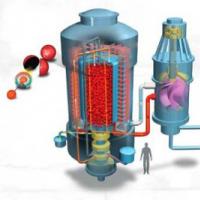 The very first power plant in the world
The very first power plant in the world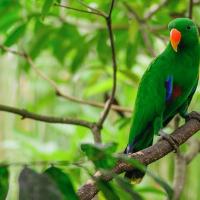 Macaw lifestyle and habitat
Macaw lifestyle and habitat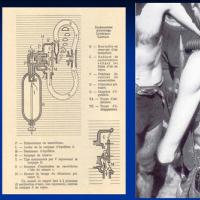 Denise's "diving saucer"
Denise's "diving saucer"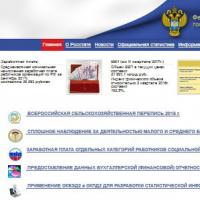 Letter from Rosstat for free!
Letter from Rosstat for free!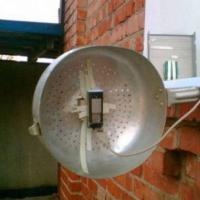 We strengthen the signal of the Yota-modem Not a stable signal yota
We strengthen the signal of the Yota-modem Not a stable signal yota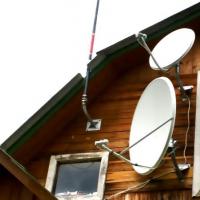 How to spend the Internet in the country without overpaying: tips and instructions Internet in the country what to choose
How to spend the Internet in the country without overpaying: tips and instructions Internet in the country what to choose Mobile Internet Skylink Purchase of equipment and SIM-cards
Mobile Internet Skylink Purchase of equipment and SIM-cards